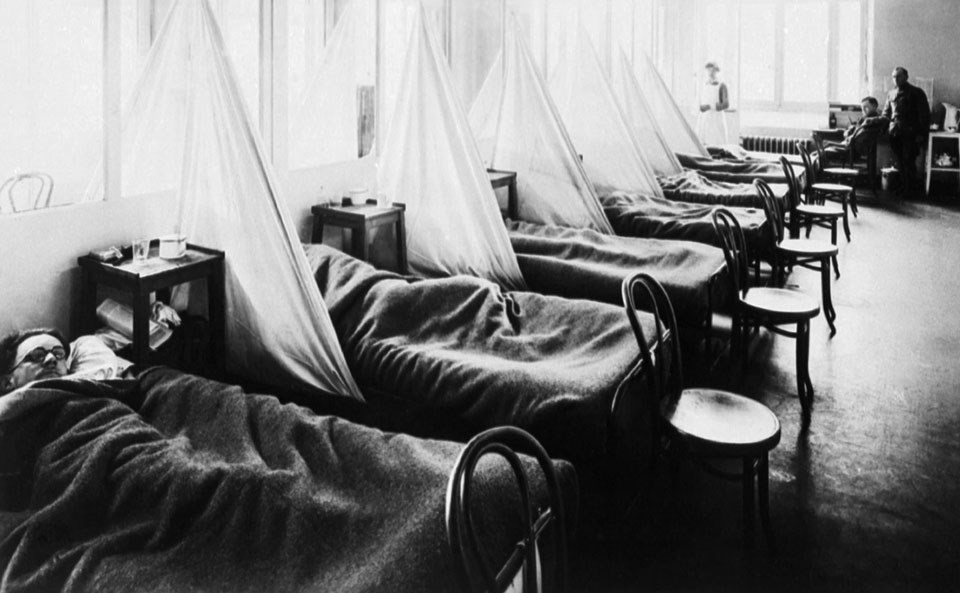Last updated: April 8, 2020
Article
The Influenza Pandemic of 1918 at Camp Sherman

NPS Photo

Library of Congress
While the allies battled an enemy in the fields and trenches of Europe in 1918, the entire world would have to engage and fight a seemingly invisible enemy that wasn't isolated to war combatants on the field of battle. The Influenza Pandemic (widely known as the Spanish Influenza Pandemic, at the time) of 1918 would tally a greater mortality rate than that of all who were killed during combat in WWI. No one is quite sure where exactly the Influenza originated, but once it began to spread there was no hiding from this silent and deadly disease. It is estimated that 50 million people, about 3% of the world population, died as this disease spread with ruthless efficiency. 43,000 U.S. soldiers, around half of those who died in Europe during the war, were killed by the influenza virus and not by a mortal enemy in combat. In the U.S. alone, over a quarter of the population would become infected and about 675,000 would die as a result of the disease. Conditions around the globe would mimic that of the Black Death Bubonic Plague in the 14th century.

NPS Photo
A Global Killer comes Home
In Chillicothe and at Camp Sherman, the disease spread just as quickly as it did everywhere else. Thousands of residents and soldiers were infected in a very short time. Approximately 5,686 cases of influenza were documented among Camp Sherman soldiers in 1918. 1,777 of them were unable to ward off the disease and died. Statewide in Ohio, hundreds of thousands of people became infected and tens of thousands died. During one week alone in the fall of 1918, 1,541 people were confirmed to have died throughout the state.
With the high mortality rate at Camp Sherman, The Majestic Theater on 2nd Street in Chillicothe became a temporary morgue. Bodies would be "stacked like cordwood" at the theater while it was operated as a morgue. Body fluids that were drained during the embalming process ran off into the alley next to the theater giving it the dubious nickname of "Blood Alley." Once victims' bodies completed the embalming process, they would be transported by wagon back to the camp so they could be sent back to their hometowns by railway. As these wagons made their way through Chillicothe, funeral hymns were played to reflect the somber mood. As with all public places in the U.S., meeting places, bars and theaters were closed to try to prevent further spread of the disease. All personnel at Camp Sherman were quarantined from Chillicothe as well.
Time and Change
By summer of 1919, the pandemic would come to an end as the influenza ran its course and the world's population built up an immunity towards it. This was a pandemic that the world had never seen the likes of before and hasn't seen the likes since. While other strains of influenza have popped up through the years since 1919, the Influenza Pandemic of 1918 (Spanish Flu) remains one of the most devastating and deadliest diseases that the world has ever seen.

US Army






